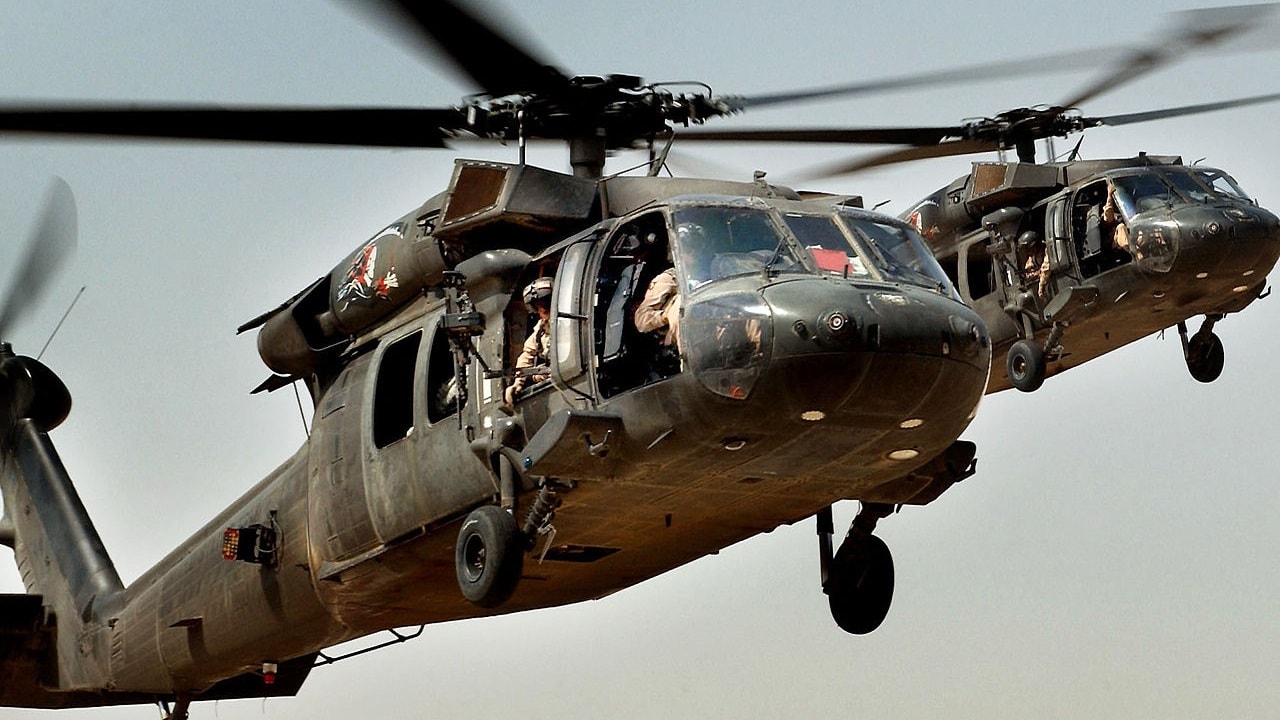The Sikorsky UH-60 Black Hawk medium-lift utility helicopter has been a workhorse of the United States Army since it first entered service in 1979 – when it replaced the Bell UH-1 Iroquois as the service’s tactical transport helicopter. It has served in combat during conflicts in Grenada, Panama, Iraq, Somalia, the Balkans, Afghanistan, and other areas in the Middle East; while modified versions have been developed for the U.S. Navy, Air Force, and Coast Guard.
Since earning a reputation as a tough, reliable utility helicopter, the Black Hawk has also been adopted by the armed forces of 28 other countries worldwide. The U.S. Army still remains the largest operator with 2,135 in its fleet.
The helicopter has been steadily improved and upgraded, and last month, a specially modified Black Hawk took part in a series of test flights at the Yuma Proving Ground, Arizona, without a crew onboard. Sikorsky, which is now a subsidiary of Lockheed Martin, and the Defense Advanced Research Projects Agency (DARPA) successfully demonstrated to the Army how an unmanned Black Hawk helicopter flying autonomously can safely and reliably perform internal and external cargo resupply missions, and a rescue operation.
Taking Flight Without a Pilot
Over three days, as part of the U.S. Army’s Project Convergence 2022 (PC22) experiment, the flights demonstrated how existing and future piloted utility helicopters could soon take part in complex missions in reduced crew or autonomous mode. According to DARPA, this could give Army commanders and aviators greater flexibility in how and when aircraft and pilots are used, especially in limited visibility or contested environments.
Sikorsky partnered with DARPA to develop autonomy technology that one day could exponentially improve the flight safety and efficiency of rotary and fixed-wing aircraft. Sikorsky’s autonomy system, known as MATRIX technology, forms the core of DARPA’s ALIAS (Aircrew Labor In-cockpit Automation System) project.
“We believe MATRIX technology is ready now for transition to the Army as they look to modernize the enduring helicopter fleet, and acquire Future Vertical Lift aircraft,” said Igor Cherepinsky, director of Sikorsky Innovations. “In addition to increasing flight safety and reliability, MATRIX technology enables survivability in high tempo, high threat 21st Century Security environments where Black Hawk helicopters operate today, and DEFIANT X and RAIDER X helicopters could operate in the future. Uncrewed or reduced crewed helicopters could safely perform critical and lifesaving missions day or night in complex terrain and in contested battlespace.”
The U.S. Army’s Project Convergence is its flagship modernization learning, experimentation, and demonstration campaign. The Army led its first large-scale Project Convergence experiment in 2020 and has continued to grow the scope, scale, and complexity of the event annually.
Gateway to the Future
During PC22 Technology Gateway, the Sikorsky and DARPA team successfully demonstrated how an optionally piloted Black Hawk helicopter with no humans on board could be used to deliver a large quantity of blood product unharmed by flying low and fast above ground level using the terrain to mask its signature; then resupply troops with an external load; and re-route mid-flight to evacuate a casualty.
During the flight demonstrations, pilots flew and landed the Black Hawk aircraft, then activated the MATRIX system to give full control to the flight computer. When the pilots exited, the helicopter autonomously completed a series of mission demonstrations, including the “Long-endurance Medical Resupply,” and “Cargo Delivery and Casualty Evacuation.”
During the former demonstration, the Black Hawk aircraft successfully flew 83 miles while loaded with 400 units of real and simulated blood – totaling 500 pounds. On reaching 40 miles from its initial take-off point, the helicopter descended into a valley as low as 200 feet above ground level at 100 knots.
In its follow-up combined mission demonstration, the helicopter lifted off with a 2,600-pound external load attached to a 40-foot sling and flew at 100 knots for 30 minutes toward a designated landing zone.
According to Sikorsky, while in flight, the helicopter was redirected, simulating a scenario in which a threat needed to be neutralized near the primary landing site. The team was able to further demonstrate how a ground operator with a secure radio and tablet can take control of the uncrewed helicopter, command it to release its sling load, and then land to evacuate a casualty from a nearby location. Once the manikin on a litter was secured inside the cabin, the ground operator launched the aircraft. During the return flight, a BATDOK health monitoring device integrated with the helicopter’s communications system relayed the patient’s vitals in real-time to a ground-based medical team.
Addressing a Pilot Shortage
The U.S. military has continued to struggle with a pilot shortage, and artificial intelligence (AI) has been developed to help address the issue.
Earlier this year, the United States Air Force announced that it was working with Merlin Labs to develop software that could allow a Lockheed Martin C-130J Hercules to fly with just a single pilot, whereby AI would act as the second pilot.
In February, the Army had also successfully conducted a prior test of DARPA’s ALIAS with a UH-60A Black Hawk in a 30-minute flight over Fort Campbell, Kentucky.
“With reduced workloads pilots can focus on mission management instead of the mechanics,” said Stuart Young, program manager in DARPA’s Tactical Technology Office. “This unique combination of autonomy software and hardware will make flying both smarter and safer.”
A Senior Editor for 19FortyFive, Peter Suciu is a Michigan-based writer. He has contributed to more than four dozen magazines, newspapers, and websites with over 3,000 published pieces over a twenty-year career in journalism. He regularly writes about military hardware, firearms history, cybersecurity, and international affairs. Peter is also a Contributing Writer for Forbes. You can follow him on Twitter: @PeterSuciu.

